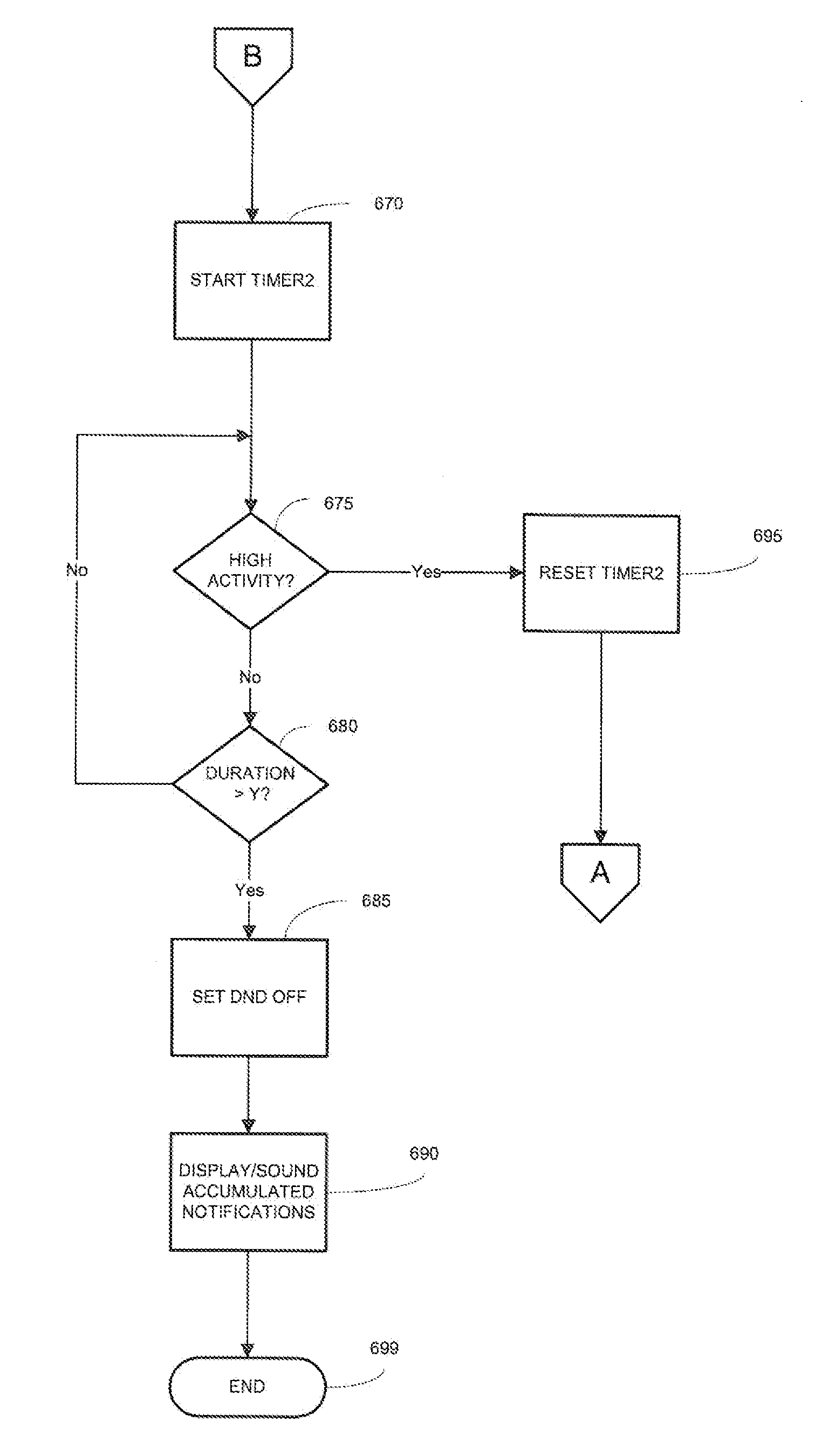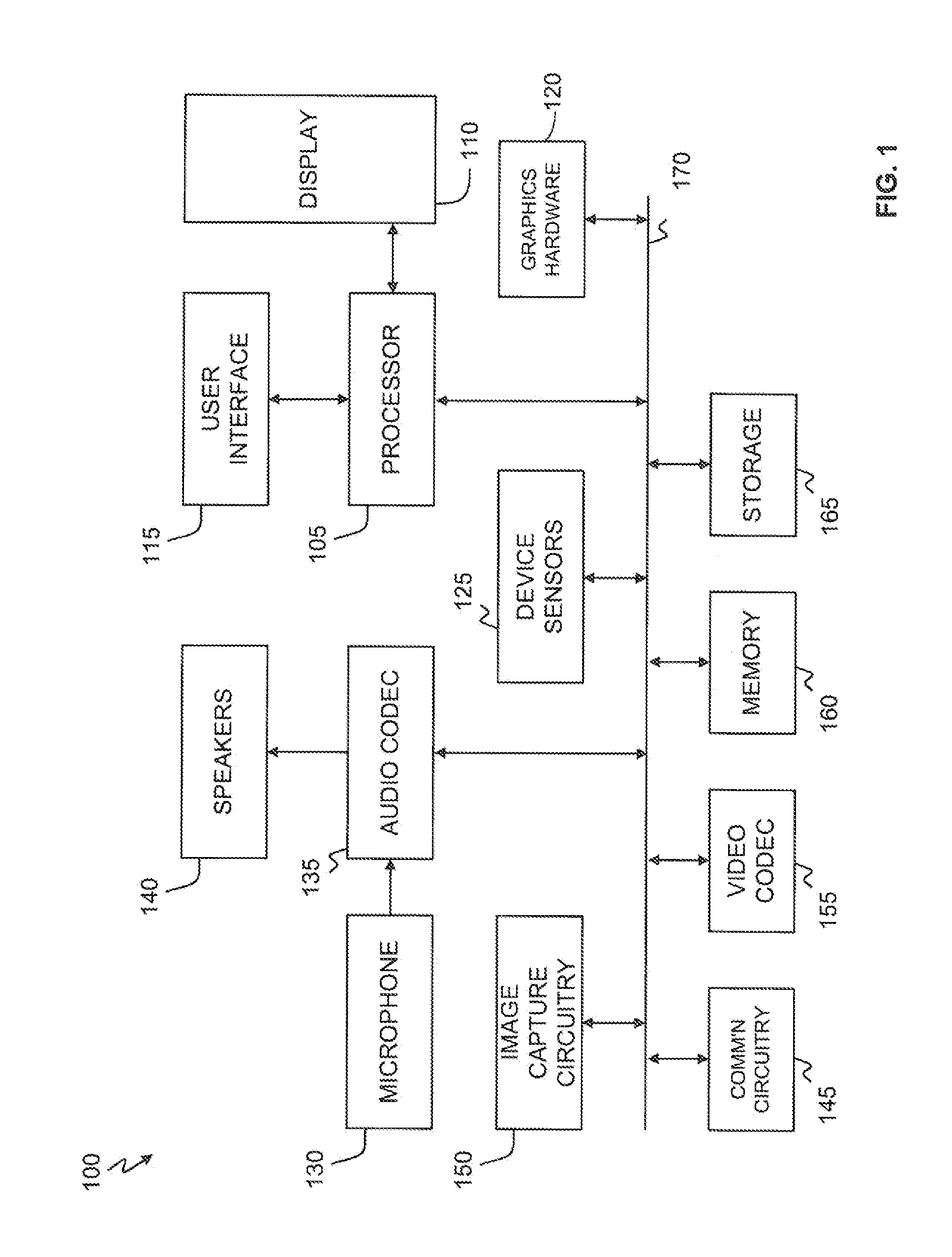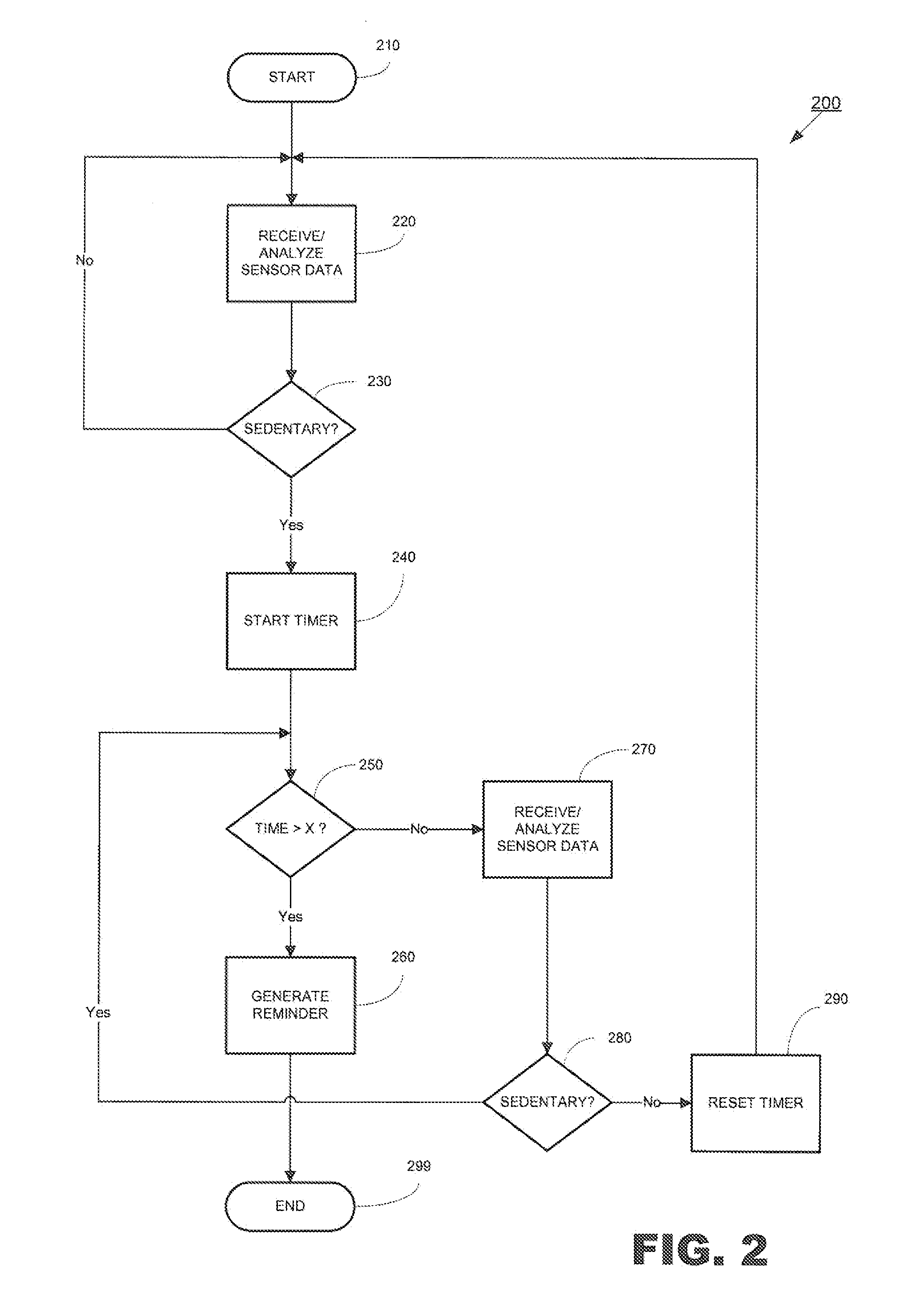Method and Apparatus For Automatically Adjusting the Operation of Notifications Based on Changes in Physical Activity Level
- Summary
- Abstract
- Description
- Claims
- Application Information
AI Technical Summary
Benefits of technology
Problems solved by technology
Method used
Image
Examples
example 1
[0027]Referring now to exemplary process 200 illustrated in flowchart form in FIG. 2, it may be seen how the invention may be used to remind a user to get up, stretch and move about if an extended period of inactivity is detected.
[0028]The process may begin at 210 with the user selecting the process to run in the background of his or her processor based device.
[0029]At 220, the device may receive and analyze data from various onboard and / or external sensors, as described above. At 230, the device may make a determination from the sensor data whether the user is sedentary (i.e., low activity level). For example, the device may determine from the motion sensors (accelerometers) and / or location sensors that the device is generally not moving and a remote pulse rate sensor may indicate a relatively low user heart rate. If it does not seem that the user is sedentary (“No” branch at 230), the device may continue to receive and analyze sensor data at 230 and continue to monitor for a seden...
example 2
[0032]This exemplary process (300 in FIG. 3) is a refinement of the process of Example 1 wherein reminders to get up, stretch and move about are suppressed if the user is likely asleep.
[0033]The process may begin at 310 with the user selecting the process to run in the background of his or her processor based device.
[0034]At 320, the device may receive and analyze data from various onboard and / or external sensors, as described above. At 330, the device may make a determination from the sensor data whether the user is sedentary (i.e., low activity level). For example, the device may determine from the motion sensors (accelerometers) and / or location sensors that the device is generally not moving and a remote pulse rate sensor may indicate a relatively low user heart rate. If it does not seem that the user is sedentary (“No” branch at 330), the device may continue to receive and analyze sensor data at 330 and continue to monitor for a sedentary state at 330.
[0035]If a sedentary state ...
example 3
[0038]An exemplary process according to the invention that employs an activity level transition to trigger a user-selected reminder is illustrated in flowchart form in FIG. 4 as process 400.
[0039]The process may begin at 410 with the user of a device selecting the particular function from a list of optional functions. At 420, the user may input a particular message for the reminder. As an example, the user may input “call Steve.” In certain embodiments, the message may be selected from a list of messages which may include system generated messages and / or messages previously input by the user. At 425, the user is prompted to select a specific transition that will trigger the reminder. The selection may be from a list of selections presented by the system. For the purposes of the illustrated example, the selected transition is “when I have finished running.”
[0040]At 430, the device may receive and analyze data from various onboard and / or external sensors, as described above. At 440, t...
PUM
 Login to View More
Login to View More Abstract
Description
Claims
Application Information
 Login to View More
Login to View More - R&D
- Intellectual Property
- Life Sciences
- Materials
- Tech Scout
- Unparalleled Data Quality
- Higher Quality Content
- 60% Fewer Hallucinations
Browse by: Latest US Patents, China's latest patents, Technical Efficacy Thesaurus, Application Domain, Technology Topic, Popular Technical Reports.
© 2025 PatSnap. All rights reserved.Legal|Privacy policy|Modern Slavery Act Transparency Statement|Sitemap|About US| Contact US: help@patsnap.com



